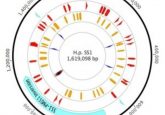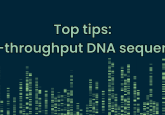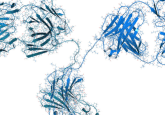The future of genomics

Many diseases occur at the single-cell level, including cancer. With novel single-cell sequencing technologies emerging and booming, is single-cell sequencing now the future of genomics?
Charlie Silver is the co-founder and CEO of Mission Bio (CA, USA). Mission Bio developed the first single-cell DNA sequencing technique with single base resolution – the Tapestri® Platform. It is used particularly for advancing precision medicine by helping cancer centers and drug companies predict response and resistance to therapy. Read more about the Tapestri Platform here. They have recently announced their novel cloud-based technology, Tapestri Designer.
“We’re bringing the best in precision medicine using precision genomics.”
Please could you explain a bit about your new cloud-based technology?
We’ve been very excited about this. It’s a first for the single-cell space and the solution is best in class overall for genomics in a lone single cell. The technology is an online design tool that enables customers to access a web portal very quickly and build their own custom panels.
We developed Tapestri Designer in response to a need we saw in the market. We provide targeted panels for single-cell DNA sequencing, and along the way we recognized that customers need to be able to target exactly what they need for their applications of interest. It’s really important in translational and clinical research to get just the actionable content that researchers care about, and make sure you’re not paying to sequence anything else.
A lot of our customers are running large patient studies where the cost of sequencing and the quality of data is really important. This is the first design tool that allows you to go online, design your content within a couple of minutes, and send it through to the design and build team from there. What previously took a couple of months now takes just a couple of minutes.
How is this going to push forward researchers work?
The ease and speed are really important. We’ve been on the market for a little over a year now and we’ve found that while customers like our catalogue panels, they inevitably use that as an entry point and want to add a mutation here, take something off there, or even subset the panels to keep their cost of sequencing down.
This platform allows them to pick out the exact content they need. Then, they can run one panel off this application, and if they figure out that a particular gene is important, they can quickly add it onto the next run or can subset down to keep the sequencing costs low.
Researchers who know what they want to sequence can very quickly and comfortably bring in the content that matters to them, rather than needing to use everything we’ve built into the catalogue panels, or rely on what their colleagues think are important. We’ve found it’s really important in this space to sequence what you care about.
 Charlie Silver, Mission Bio co-founder & CEO.
Charlie Silver, Mission Bio co-founder & CEO.
How does the platform apply to precision medicine?
Cancer is a very complex disease but it’s a disease fundamentally at the single cell level. Cancer starts as a mutation in one cell and by the time we biopsy the patient there are many mutations in many cells, all of which are driving the disease. Because it can be such a heterogeneous disease, when we treat with precision medicine, the disease evolves away from the treatment.
That is why we have moved on to this paradigm of treating with a precision therapy, resolving the disease for a little bit, for example, but often the patient can relapse, like in acute myeloid leukemia (AML). The patients go through this continuous cycle of treatment and relapse because the treatment clears the population that you are treating but then other populations come back even bigger and the problem can get worse as patients are treated.
So single cell, and especially single-cell DNA sequencing, is a way of looking at all those mutations together in the cells that are driving the disease. You can look at the spectrum of what’s in there and anticipate where the disease is going right from the start. As we’re applying these precision therapies, we can monitor patients during treatment and understand how cell populations are coming and going to quickly and dynamically change therapy.
The cancer centers using our technology are running large-scale patient studies to look at markers of response or resistance based on different mutations in single cells. Drug companies are doing very similar work but in their case, they’re typically looking at the response to their precision therapy together with whatever other resistance mutations might cause patients to escape therapy. Therefore, single cell turns out to be really important for precision therapies.
Do you think that eventually it may be able to be used as a diagnostic tool as well?
That’s where we expect this technology to go. We believe that we’ve now carved out the translational and clinical side of the market. We’ve just announced a partnership with LabCorp (NC, USA) who shares that belief. We’re now working with them as our preferred partner CRO for our pharma customers. That helps to open up access for them but we’ve also had interest from LabCorp on the clinical testing side. So, as these pharma companies move through the clinical research pipeline, LabCorp, as a reference lab, will then be able to support those drugs as they hit the market.
Is there a plan to share the data you generate or make it open access?
There is a plan for that — however, we’re not collecting and sharing the data right now.
Our customers have sequenced millions of cells so far, millions of AML cells, let alone the millions of other cells for other disease areas. There’s a tremendous amount of information within millions of cancer genomes that can be pulled together to look for patterns of therapy response or resistance. Every one of our customers has a tremendous data set, but when you look at that in aggregate it’s an enormous opportunity to learn something fundamentally different about cancer.
Has Mission Bio evolved into the CRISPR research space?
We had researchers come to us, especially in the leukemia space, and say it’s exactly what they’ve been looking for, because leukemia is driven by the clonal evolution of the disease and you need a single cell technology to be able to track that. We saw the rest of the single cell space develop on the research side and we realized that we could really drop the cost of single cell sequencing with these targeted panels, while also improving the power of what you can do for predictive biomarkers – especially for leukemias, but really for any cancer type.
The market came to us and told us that this is a really important technology for the research, and ultimately for the clinical side of the space as well, but no one else has been supplying this need because it’s fundamentally very difficult to do single-cell DNA sequencing at single-base resolution.
Over time we built this for oncology but then once we were on the market, the cell therapy space came to us and said, if you can detect single-base resolution, you can detect edits. There’s currently a lot of companies fighting for the next generation of CAR-T cells that have improved specificity with the lowest toxicity possible. As they’re making multiple edits into cells, they must understand how they’ve edited where they expect to edit (on-target), and if any unintended, or off-target, edits have occurred.
With all their input, we then built what is essentially a spellchecker for CRISPR, where you can go through and analytically measure what you’ve edited the same way we analytically measure how cancer has edited the genome. That was where single cell sequencing needed to go.
-
The novel platform that is accelerating cancer research
-
Can modern DNA sequencing solve history’s greatest murder mystery?
-
AACR 2019 highlights and updates
How well-known is the Tapestri Platform? Is it common knowledge, or are most people just starting to use it?
It’s emerging. On the research side, I think it’s very well known. You will see a lot of talks at this conference (AACR Annual Meeting, 29 March – 3 April 2019, Atlanta, GA, USA) on single cell research for cancer. So, why you might use single cell for research is clearly starting to be understood, but the clinical side is really a wide open space.
Some of the leading edge organizations on the research side that have already adopted single cell are now starting to think, how can I deploy this in the clinic? Intuitively it makes sense – cancer is a single cell disease, you need to detect single cells to know how to treat it. The research side of the space is finally now starting to push over to the translational and clinical side and I think that’s where the education needs to happen.
What is your vision? Where do you see this in 5 – 10 years’ time?
As sequencing costs drop, the front-end prep and the back-end analytics become more valuable. Even now sequencing costs are very low, but especially in another decade the middle piece of the readout will cost nothing, and as much of it can be done as is wanted. What that means is the front-end sample prep becomes that much more important; the better you prep the more you can sequence, given the low cost of sequencing, so you get much better information out of better prep.
Once you have all of those cells, the back-end analytics become that much more powerful. I think in a decade, really everything in genomics is going to be single cell because fundamentally disease happens at the level of cells. Genomics as we do it today – that is, bulk genomics – is a proxy for what you are trying to measure on single cells. Now that sequencing is dropping in cost, why not measure it on every single cell?





